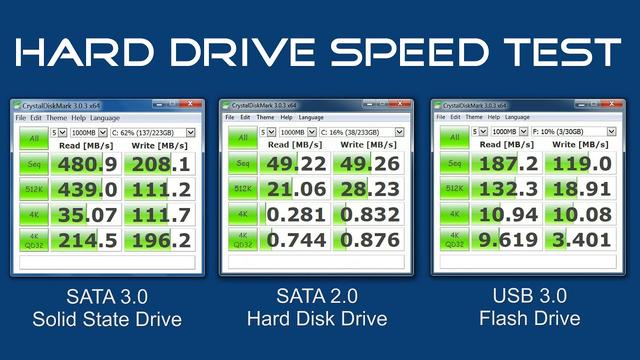Introduction
The faster the rotation speed of the hard disk, the faster the hard disk can find files, and the relative hard disk transmission speed has also been improved. The hard disk speed is expressed in revolutions per minute, and the unit is expressed as RPM. RPM is the abbreviation of Revolutions per minute, which is revolutions per minute. The larger the RPM value, the faster the internal transfer rate, the shorter the access time, and the better the overall performance of the hard drive. The spindle motor of the hard disk drives the platters to rotate at a high speed, generating buoyancy to make the head float above the platters. To bring the sector of the data to be accessed below the head, the faster the speed, the shorter the waiting time. Therefore, the rotational speed determines the speed of the hard disk to a large extent.

Household products
Generally, the rotation speed of ordinary hard disks for household use is 5400rpm and 7200rpm. High-speed hard disks are also the first choice for desktop users; and for notebook users, 5400rpm and 7200rpm Notebook hard drives can be seen in the market, but the price of a 7200rpm notebook is about 300 yuan higher; server users have the highest requirements for hard drive performance. The SCSI hard drives used in servers basically use 10000rpm, and even 15000rpm. It is much more than household products.
Negative effects
Higher rotation speed can shorten the average waiting time and actual read and write time of the hard disk. Negative effects such as increased spindle wear and increased operating noise. The speed of notebook hard disks is lower than that of desktop hard disks, which is affected to a certain extent by this factor. The internal space of the notebook is narrow, and the size of the notebook hard disk (2.5 inches) is also designed to be smaller than that of the desktop hard disk (3.5 inches). The increase in temperature caused by the increase in speed puts higher requirements on the heat dissipation performance of the notebook itself; the noise becomes larger. , And must take necessary noise reduction measures, these have put forward more requirements on the notebook hard disk manufacturing technology. At the same time, the increase in speed, while the others remain unchanged, means that the power consumption of the motor will increase, the more electricity is consumed per unit time, and the working time of the battery is shortened, so that the portability of the notebook will be affected. Therefore, notebook hard drives generally use relatively low-speed 5400rpm hard drives.
New technology
The speed is changed with the increase of the hard disk motor. Now fluid dynamic bearing motors have completely replaced the traditional ball bearing motors. Liquid bearing motors are usually used in the precision machinery industry. It uses mucosal fluid oil bearings and replaces balls with oil films. In this way, direct friction of the metal surface can be avoided, and noise and temperature can be reduced to a minimum; at the same time, the oil film can effectively absorb vibration, so that the anti-vibration ability is improved; it can also reduce wear and increase life.
